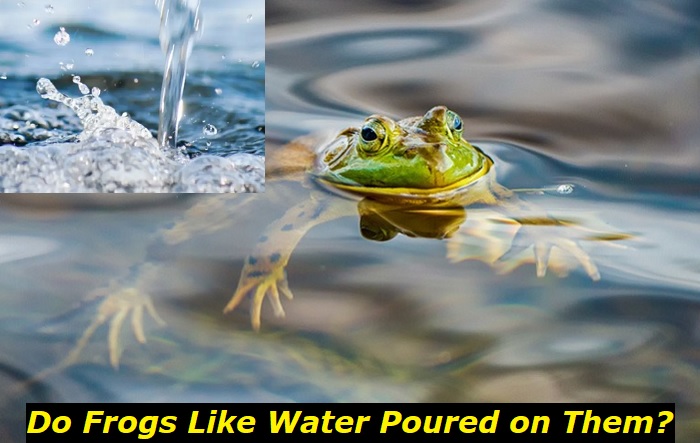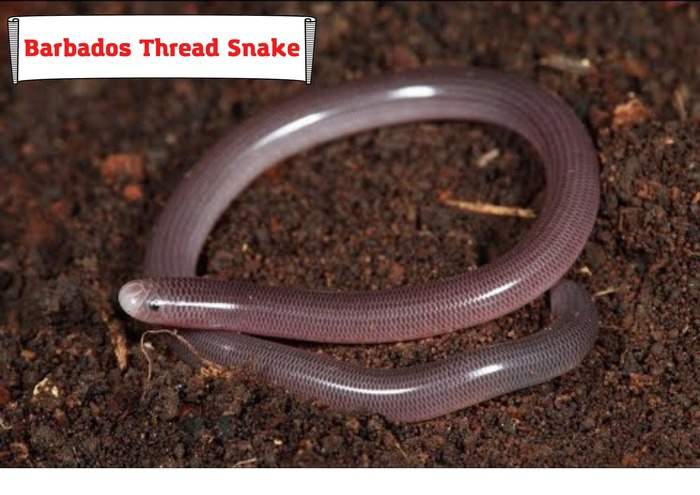Keeping your frog hydrated is one of the marks of a caring pet owner. But caring must be done right to avoid irreparable damage and even death. This is the case with pouring water on frogs.
Check out this article to learn whether frogs like water poured on them and a few other things you should know about caring for frogs.

Do Frogs Like Water Poured on Them?
Usually, when frog owners or random kids find some frogs in the wild and pour some water on the critter, they often believe that the frog is happy with the dump because it raises its head most of the time.
The truth is that frogs do not like it when you pour water on them. Although frogs cannot communicate their displeasure like many other vocal pets such as dogs and cats, the adverse effects of pouring water on them show that they do not like it.
Here are some things you should know about pouring water on frogs:
Thermal Shock From The Rapid Change in Temperature
Perhaps, the first thing to understand about frogs and toads is that they are cold-blooded animals. When you pour water on the frog, you are putting the animal at the risk of a thermal shock which can lead to more adverse health effects.
Like many reptiles and other amphibians, frogs are ectothermic, and they rely on the temperature of their surrounding environment to regulate their body temperatures. Frogs feel temperature very differently from humans. Their skin also helps with respiration as it is loaded with blood capillaries that help exchange gases.
So what may be lukewarm to humans may be pretty hot for them, and what is room temperature for humans may be super cold when it touches the frog’s skin.
More often than not, the internet videos of people pouring water on frogs are inaccurate representations that frogs love it when you dump water on them. But this approach to hydrating your frog is not the best.
The problem with it is that the water bottles from which you are pouring the water probably came from the freezer or fridge and will supply very cold water onto the animal’s skin.
The same is the case if you leave the water at room temperature, and if you attempt to heat the water, you may end up pouring water that is too hot on the frog, even though it does not appear to be hot on your skin.
When you do this, you drastically change the temperature around the amphibian’s environment, which it relies on to regulate its internal temperature. This can lead to thermal shock for the frog because the change was sudden, leaving it with too little time to prepare its body for the change in temperature of the environment.
This is usually a problem because thermal shock is an extreme form of stress for all ectothermic organisms. The danger here is that it can compromise the frog’s immune system. When it compromises the frog’s immune system, this makes the frog susceptible to diseases as its immune system has been impaired from the thermal shock.
Another danger of thermal shock is its adverse effect on the frog’s nervous system and how it affects the neuronal activities in the frog’s body. The effects of the thermal shock can be far-reaching, even affecting its metabolism and, in some instances, deregulating it.
For this reason and its far-reaching effects, it is clear that frogs do not like it when you pour water on them.
The Possibility of Drowning
Another reason frogs do not like it when you pour water on them is that you put them at risk of drowning. When you pour water on the frog, you may notice how it raises its head.
Some confuse this gesture for comfort and even argue that since frogs can breathe underwater, no harm can come to them when you pour water on them. That is inaccurate because, in reality, the frog is protesting by raising its head up.
Frogs have an interesting respiratory system. They have nostrils and lungs and exchange gases through their skins. When they use their nostrils, they usually have the nostrils above the water level.
They breathe in air through their nostrils into their mouth by lowering the buccal cavity flow while keeping their mouth closed.
After taking air into their mouth, the next step is to close their nostrils. When they do this, the passage between their mouth (buccal cavity) and lungs is opened. They raised the flow of their buccal cavity to make the airflow into their lungs.
After the air is forced into their lungs, what follows is the exchange of gases in the lungs as well as the lining of the buccal cavity.
Oxygen is taken in, and carbon dioxide is diffused out.
They also undergo cutaneous respiration, respiration through the skin. What happens here is that the exchange of gas is done through the skin. Amphibians, generally, and frogs, in particular, have very thin skin, which is packed full of blood capillaries for the exchange of gases.
The dissolved oxygen in the water diffuses into the capillaries of the frog. The carbon dioxide from the blood capillaries is released into the water.
However, to argue that you can pour water on them because they can breathe through their skin is inaccurate, and here is why. When you pour water on the frog, you do not give the frog enough time to prepare itself for the pour.
Because it has a very short time to adapt its body, there is a high chance that the water will go into its nostrils and lungs, causing them to drown.
That is exactly what happens to your frog when you suddenly dump water on it. When you find it trying to remove its head from the direction of the water, it is because it is in pain, and the water has probably gone up the wrong tubes and even into the lungs.
What If the Frog Survives the Thermal Shock and Drowning?
Even if the frog escapes the risk of drowning and survives the thermal shock, there is still a risk of infection when you pour water on the frog.
Generally speaking, any amount of water or any other type of fluid that makes it to the lungs of any critter puts that critter at risk of a respiratory infection.
This is especially important because any respiratory infection can quickly kill the animal. It is also more concerning because the death will be painful as the animal will go through excruciating pain before giving up the ghost.
Even if the frog survives all of this, it is still important to keep in mind that pouring water on the frog puts the animal in a painful situation.
It’s like pushing a little kid into a pool without warning. The short time will mean a slower reaction time which puts the kid in danger because the water will go up its nostrils and into the wrong tubes before it has had enough time to hold its breath. This hurts as kids in this scenario often experience sharp pain. It is the same for frogs.
You also want to remember that a thermal shock is an extreme form of stress which has other deadly consequences. So overall, it is not good to pour water over frogs.
How Can I Keep My Frog Hydrated
The first thing you must remember is to avoid touching the skin as much as possible. The frog’s skin is very sensitive as it serves many functions. Its functionality depends on it being hydrated.
So whenever you find your frog dehydrated, you can be sure that the skin is already suffering some damage. As such, it would be best to limit the handling to prevent further damage to the animal’s skin.
You can keep your frog hydrated by soaking its backend in a small pool of water. But it is important that you do not use so much water to submerge its head. It would be best to ensure that the water level is below the frog’s head so it can breathe.
You can use a water dish for this but ensure that it is a shallow water dish. The height must not be high enough to reach the frog’s chin.
Can I Pour Tap Water On Frog?
First of all, you do not want to pour water on the frog at all. It would be best to place it in a shallow water dish with enough water for the critter to hydrate but not enough to reach its chin. This is to prevent it from drowning.
However, under no condition should you use tap water to keep your frog hydrated. Frog skin is usually very thin and richly supplied with capillaries that help respiration.
Tap water will adversely affect the animal’s skin and its ability to breathe well with its skin because tap water usually contains chlorine and chloramine. These chemicals are toxic to a frog’s skin and can cause serious damage to the animal’s skin and even lead to its death.
- Dubia Roach Egg Sack: How To Understand if It’s Healthy? - January 2, 2023
- How To Feed African Dwarf Frog While on Vacation? - December 26, 2022
- Baytril for Bearded Dragon: Here’s What You Should Know - December 19, 2022



